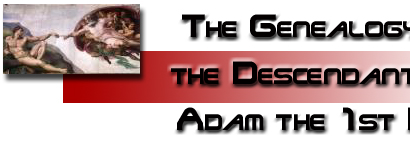Edward I (born 1239, ruled 1272-1307) was one of England's greatest kings. He was a handsome man, with fair hair and ruddy cheeks, and so tall that he was nicknamed Longshanks. He delighted in tournaments and hunting, but he was also practical and hardworking. For seven years before he came to the throne, he was the real ruler for his weak father, Henry III (see Henry, Kings of England ; Montfort ). He was in the Holy Land involved in the crusades when his father died, but there was no question that he would take the throne.
Edward has been called the "English Justinian" because, like the Roman emperor Justinian, he organized the laws. His laws were not restatements of existing customs but statutes in the modern sense. Many of them, particularly the land laws, had a long-lasting influence. A statute of 1285 limited church courts to strictly church matters--a change that Edward's great-grandfather, Henry II, had been unable to make because of the murder of Thomas à Becket (see Becket ; Henry, Kings of England ). Edward also stopped paying a feudal tribute to the pope.
Parliament grew in strength during Edward's reign because he continued the policy of Simon de Montfort in summoning to it representatives of the towns and lesser knights. His parliament of 1295 is known as the Model Parliament ( see Parliament ). In 1297 he reaffirmed the Magna Carta in the famous confirmation of the charters. All of Edward's moves were not fair and admirable ones, however; he forced Jews out of England in 1290.
Soon after coming to the throne, Edward conquered Wales and gave to his infant son, Edward, the title prince of Wales (see Wales ). Until 1289 the care of his French possessions, principally Aquitaine, in Southern France, absorbed much of his attention. For the rest of his life, his main concern was Scotland.
He conquered the country in 1296; but in 1297 all Scotland rose in revolt against him under the popular leader, William Wallace. Edward defeated Wallace at Falkirk the next year, but the Scots still resisted. Near the end of Edward's reign Scotland found a new leader in Robert Bruce. In 1307 King Edward, then 70 years old, led an army toward Scotland but died before he reached the border.
Edward II (born 1284, ruled 1307-27), the son of Edward I, was the first English prince of Wales (see Wales ). He was tall and handsome like his father, but he was a coward in battle; and in spite of his father's careful training he had no aptitude for government. His reign was one of disorder and disaster. He continued the war with Scotland that his father had begun. The Scottish leader, Bruce, defeated the English forces in the famous battle of Bannockburn (1314) and compelled Edward to recognize the independence of Scotland.
In 1326 the king's enemies planned a widespread revolt. They easily captured the king, and in January 1327 Parliament declared him deposed and set in his place his young son Edward III. Eight months later the deposed king was brutally murdered.
Garter, Order of the
Edward III (born 1312, ruled 1327-77) became king at the age of 15 when his father, Edward II, was overthrown. He proved himself a chivalrous knight rather than a great ruler. He loved warfare, like so many of his line, and tried to give it the glamour of the "good old days" by setting up a Round Table at Windsor Castle in imitation of King Arthur. He also organized the most famous of the English chivalric orders of knighthood, the Order of the Garter. He gained temporary glory but no lasting profit through prolonged fighting in Scotland and in France, where he began the Hundred Years' War ( see Hundred Years' War ).
During Edward's reign a terrible plague, called the Black Death, wiped out from one third to one half of the country's population and caused great social and economic changes (see Bubonic Plague ).


